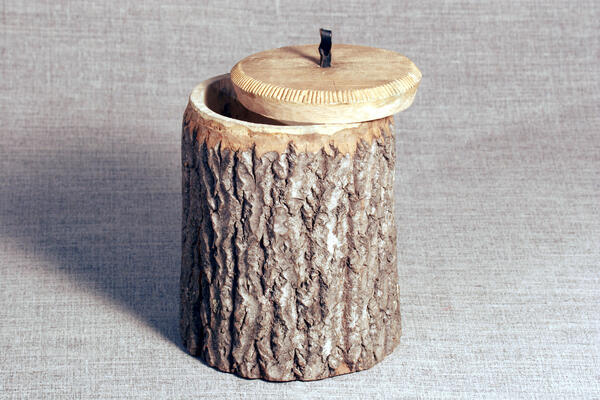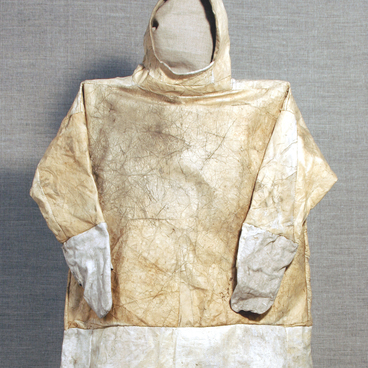For many centuries indigenous peoples of the North had been shaping their own householding culture, and they managed to preserve it till the present days. The Forest Nenets traditionally produced household items, tableware, furniture and toys using natural materials they could find. The most frequently used materials were wood and birch bark. These utensils were very strong and durable.
Later on, specific ethnical features were lost and traditional wooden items were replaced with stuff made of other materials. Mostly it concerns kitchen utensils: with the development of trade, metal and later even plastic items came into use. In about the middle of 1930s, enameled kettles and bowls, metal ladles and other household items appeared in the NEnets’ chums.
Yet the Forest NEnets still have a traditional set of wooden household utensils which includes a low-legged table, a cradle, some tools, containers for berries and snuff-boxes. Wooden items have always been made by men. They chiseled them with simple tools — a knife and an axe. Every NEnets has his own knife, boy learn how to handle it at an early age. Snuff-boxes hold a special place among the items made of wood.
There are large and small snuff-boxes, the bigger ones are for storing the main stock of tobacco in a chum. They are usually chiseled of a pine or an aspen trunk. The diameter of a vessel is about fifteen centimeters. Snuff-boxes are topped with a lid which is often decorated with a simple lines ornament. Men carry small snuff-boxes attached to their waistbelts. There’s a small amount of tobacco inside that a man may need outside his camp.
The ethnographical exposition ‘Neighbors. The Forest Nenets people’ of Gubkinsky Museum of the Development of the North displays a large snuff-box made of a pine trunk. The outer walls have the bark as a decoration, around the lid there is a lines ornament.
Later on, specific ethnical features were lost and traditional wooden items were replaced with stuff made of other materials. Mostly it concerns kitchen utensils: with the development of trade, metal and later even plastic items came into use. In about the middle of 1930s, enameled kettles and bowls, metal ladles and other household items appeared in the NEnets’ chums.
Yet the Forest NEnets still have a traditional set of wooden household utensils which includes a low-legged table, a cradle, some tools, containers for berries and snuff-boxes. Wooden items have always been made by men. They chiseled them with simple tools — a knife and an axe. Every NEnets has his own knife, boy learn how to handle it at an early age. Snuff-boxes hold a special place among the items made of wood.
There are large and small snuff-boxes, the bigger ones are for storing the main stock of tobacco in a chum. They are usually chiseled of a pine or an aspen trunk. The diameter of a vessel is about fifteen centimeters. Snuff-boxes are topped with a lid which is often decorated with a simple lines ornament. Men carry small snuff-boxes attached to their waistbelts. There’s a small amount of tobacco inside that a man may need outside his camp.
The ethnographical exposition ‘Neighbors. The Forest Nenets people’ of Gubkinsky Museum of the Development of the North displays a large snuff-box made of a pine trunk. The outer walls have the bark as a decoration, around the lid there is a lines ornament.



